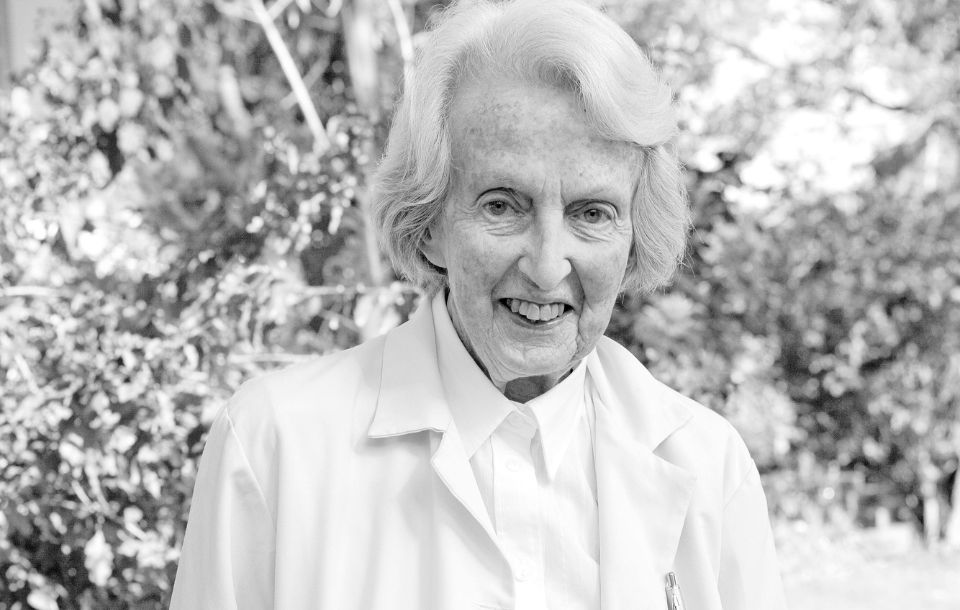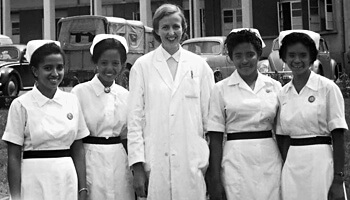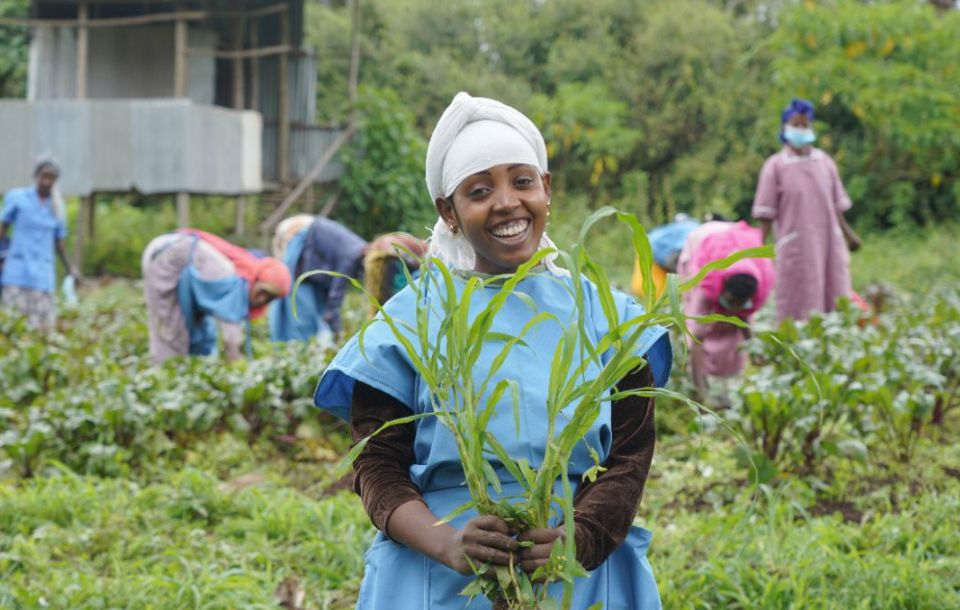
This Q&A was published in Sydney Alumni Magazine (SAM), November 2014. Dr Hamlin graduated in medicine at the University of Sydney in 1946.
By Michael Visontay

Dr Catherine Hamlin is a gynaecologist who has spent most of her life in Ethiopia. Over the past 40 years she has revolutionised care of a childbirth injury called obstetric fistula – this occurs when the baby gets stuck in the birth canal and there is no doctor to perform a cesarean section.
Up to two million women worldwide suffer from fistulas, mainly in developing countries. The babies die, and women are left incontinent and stigmatised by their families and communities.
Dr Hamlin’s lifelong commitment to help them was recognised in a moving celebration in Addis Ababa, 2014, when she turned 90. In 2014, she was nominated for the Nobel Peace Prize for the second time. The first was in 1999.
Dr Hamlin graduated as doctor from the University of Sydney in 1946 and after several internships became a resident in obstetrics at Crown Street Women’s hospital, where her husband-to-be, Reginald Hamlin, was medical superintendent.
In 1958 they answered an ad in The Lancet to set up a midwifery school in Addis Ababa, Ethiopia. They had never seen an obstetric fistula, and the prevalence of the problem prompted them to eventually set up a hospital dedicated to treating the condition.
Since founding the Addis Ababa Fistula Hospital in 1974, they have trained generations of doctors to repair fistulas. It has provided a model that has been replicated in other countries, where foundations and clinics now try to prevent as well as treat the condition. In 2005, in recognition of her achievements, the University awarded Dr Hamlin an Honorary Doctorate of Medicine.
Ahead of the announcement about the Nobel Prize, SAM asked Dr Hamlin about her medical and humanitarian journey.
WHAT IMPACT DID YOUR EDUCATION AT THE UNIVERSITY OF SYDNEY HAVE ON YOUR CAREER?
“I graduated medicine at the University of Sydney in 1946. I had decided to study medicine in my last year at school, but it was during my fifth year of university that I had one of the most defining experiences of my life. I went to hear a famous missionary speaker, Reverend Hugh Paton in Sydney, and was deeply moved by his message.
It prompted my desire, and my conviction that some day I would help others in this world. So in actual fact, it was my time at Sydney University that completely set the course of my life to spend more than half a century in Ethiopia with the poorest, most wretched patients of all.”
HOW DID YOU GET INVOLVED IN ETHIOPIA IN THE FIRST PLACE?
“I believe God guided Reg and me to Ethiopia. We were searching for more fulfilling work in a developing country and we answered an advertisement in The Lancet medical journal for gynaecologists needed in Addis Ababa. It was to set up a school of midwifery. We had no idea this opportunity would lead to our life’s work.
We had never seen an obstetric fistula before arriving in Ethiopia; it was an academic rarity. We initially worked at the Princess Tsehai Memorial Hospital in Addis Ababa, and as news of our success in saving lives and curing obstetric fistula spread more and more patients followed.
In 1974 we founded the Addis Ababa Fistula Hospital. I have a tremendous love for the work and the people. The plight of our poor patients is so terrible; what we are trying to do is to prevent these injuries and wake up the world.”
ARE YOU OPTIMISTIC THAT THE FISTULA PROBLEM IN ETHIOPIA WILL BE REMEDIED?
“I know that my dream of eradicating obstetric fistula from Ethiopia will not be achieved in my own lifetime, but it just may in the next. To be able to train dedicated young doctors and midwives is marvellous for me and my loyal staff, especially as they become enthusiastic about helping these poor women. It gives me confidence that the eradication of obstetric fistula can be achieved.
There are thousands of new cases in the countryside as the population continues to climb and there is still a backlog of some 40,000 cases we have not reached but our large hospital in Addis Ababa and the five regional centres continue in the fight to save women’s lives.
The Hamlin College of Midwives is also working to train local midwives to prevent obstetric fistula. If these poor women who come to us had only had access to a trained midwife early in labour they would have recognised something was wrong and been sent to the nearest hospital.
My work and that of the hospitals is important, but it is more important to prevent fistula in the first instance and our midwives can achieve this. My dream is for there to be a midwife in every village of Ethiopia.”
WILL YOU EVER RETIRE?
“I know I haven’t many years left ahead but I have no plans to retire. I still work six days a week. I could never imagine just living here and not working. Reg and I came to Ethiopia motivated to help people and the work we started together is not finished.
I will carry on for as long as I possibly can. There are six hospitals and a midwifery school to keep going, and I have to continue to raise money to fund them. It is this work that keeps my heart going, and my life going.”


